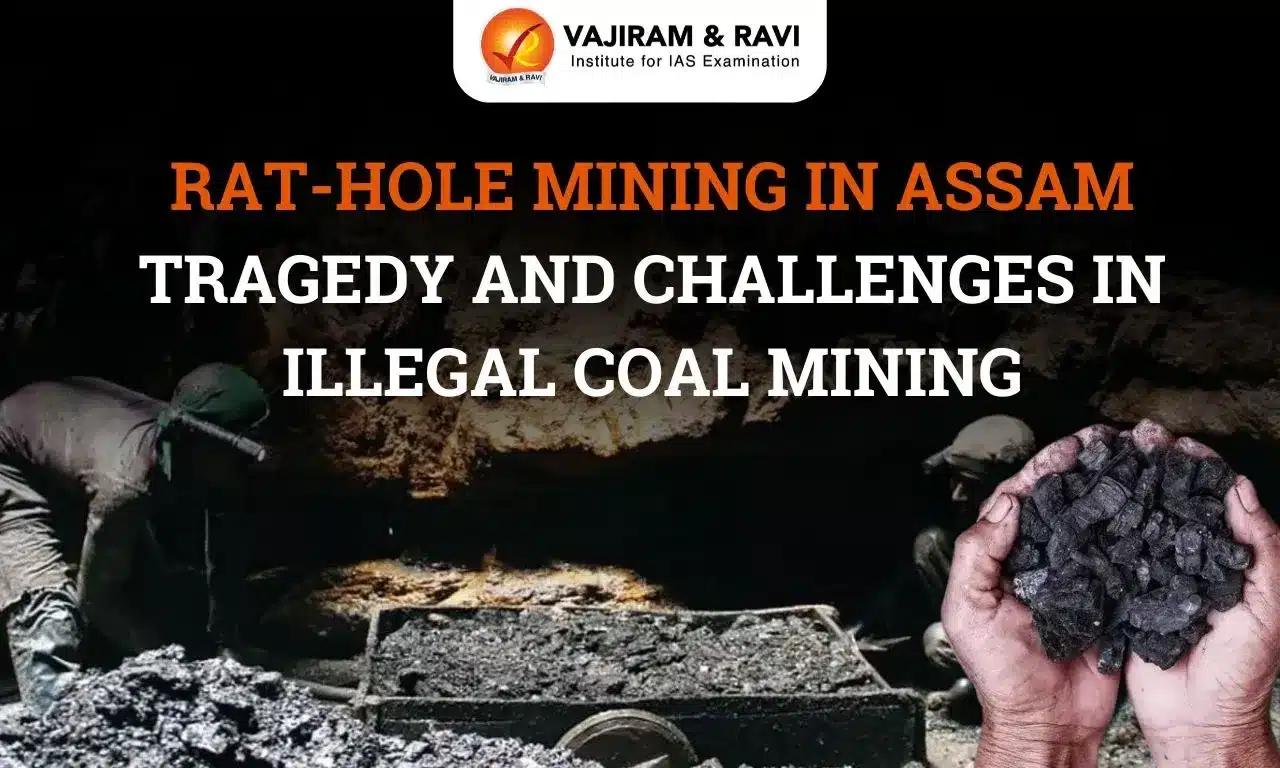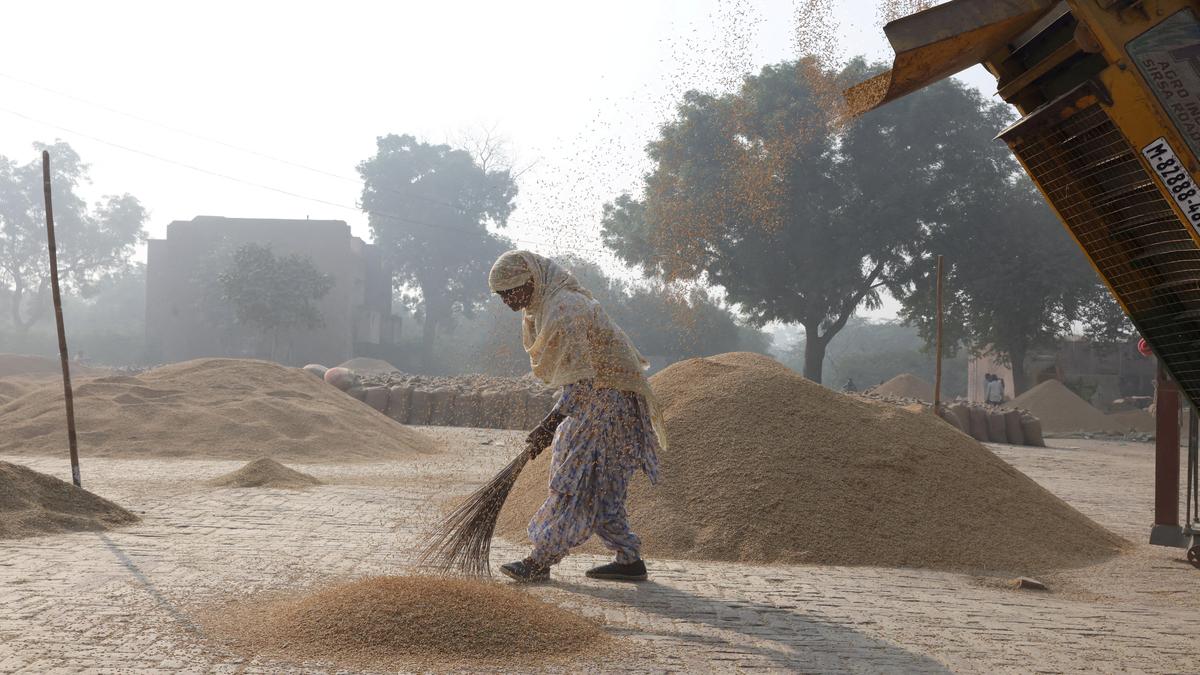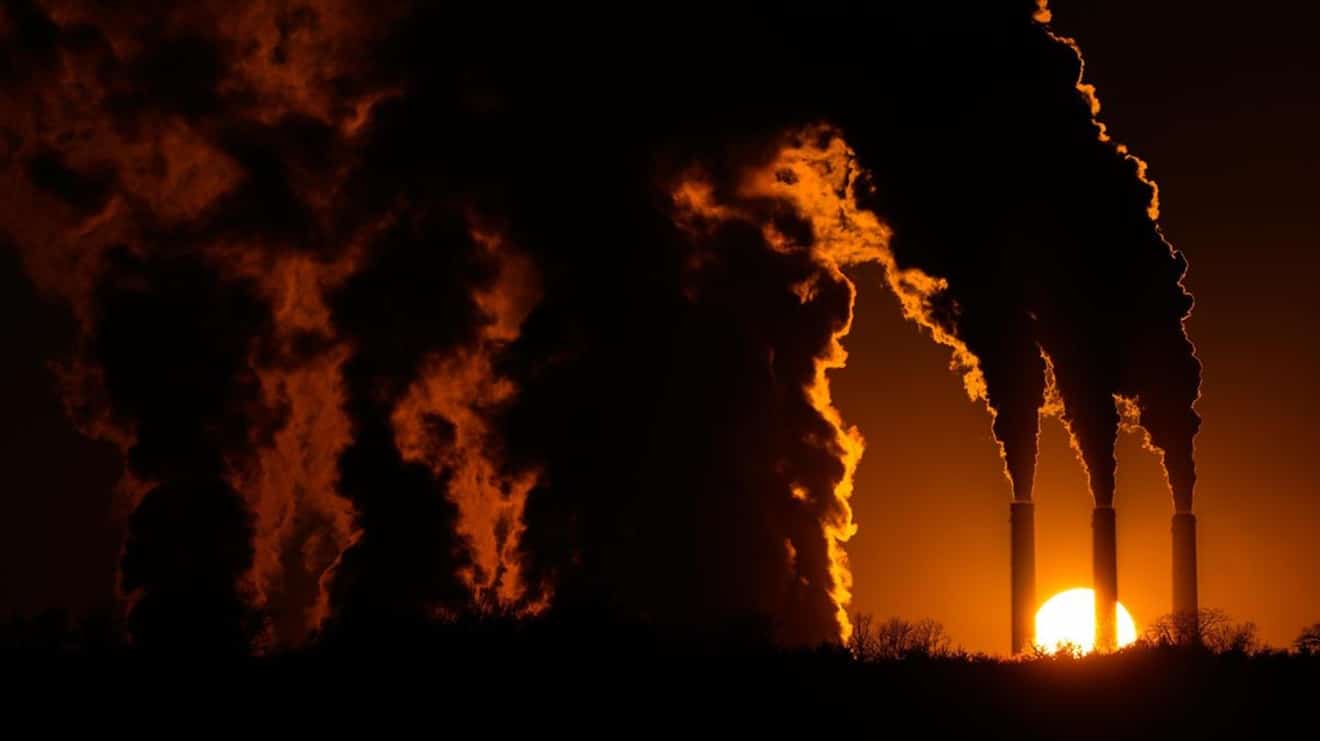What’s in today’s article?
- Why in News?
- What is Rat-hole mining?
- Ban on Rat-Hole Mining by NGT
Why in News?
Three miners were confirmed dead, and six remained trapped in a flooded coal “rat-hole” mine in Assam’s Dima Hasao district.
The water level inside the pit is 200 feet deep, and an Indian Navy team with deep-sea divers arrived to assist in rescue operations. The incident occurred on January 6 in a coal mine in Umrangso, where nine workers aged 26 to 57 were trapped.
Although Dima Hasao has extensive coal and quarrying activities, Assam Chief Minister stated that the mine appears to be illegal.
What is Rat-Hole Mining?
- About Rat-Hole Mining
- Rat Hole Mining is a method of extracting coal from narrow, horizontal seams, widely prevalent in Meghalaya.
- The term “rat hole” refers to the narrow pits dug into the ground, typically just large enough for one person to descend and extract coal.
- Once the pits are dug, miners descend using ropes or bamboo ladders to reach the coal seams.
- The coal is then manually extracted using primitive tools such as pickaxes, shovels, and baskets.
- Rat-Hole Mining Types
- Rat-Hole mining is broadly of two types.
- In the side-cutting procedure, narrow tunnels are dug on the hill slopes and workers go inside until they find the coal seam.
- The coal seam in hills of Meghalaya is very thin, less than 2 m in most cases
- The other type of rat-hole mining is called box-cutting.
- In this type, a rectangular opening is made, varying from 10 to 100 sqm, and through that a vertical pit is dug, 100 to 400 feet deep.
- Once the coal seam is found, rat-hole-sized tunnels are dug horizontally through which workers can extract the coal.
- Rat-Hole Mining Hazards
- Safety Concerns
- Lack of proper ventilation, structural support, and safety gear.
- Frequent accidents resulting in injuries and fatalities.
- Environmental Impact
- Causes land degradation and deforestation.
- Contributes to water pollution.
- Safety Concerns
- Rat-Hole Mining Challenges
- Socioeconomic Challenges
- Practices persist due to economic factors.
- Lack of alternative livelihoods for local communities hinders regulation.
- Regulatory Issues
- Mines are often unregulated despite efforts to ban or control them.
- The practice continues to face severe criticism for its risks and environmental damage.
- Socioeconomic Challenges
Ban on Rat-Hole Mining by NGT
- NGT Ban and Observations
- The National Green Tribunal (NGT) banned rat-hole mining in 2014 and upheld the ban in 2015.
- Highlighted numerous fatalities caused by flooding in mining areas during the rainy season.
- Focus on Meghalaya
- The ban was specifically enforced in Meghalaya, where rat-hole mining was widely practiced for coal extraction.
- Meghalaya’s state government appealed the NGT’s order in the Supreme Court.
Q.1. What is Rat-Hole Mining, and why is it considered dangerous?
Rat-hole mining is a primitive coal extraction method involving narrow pits and tunnels. It poses severe safety risks due to lack of ventilation, structural support, and proper gear, leading to frequent accidents. Additionally, it causes environmental damage such as land degradation and water pollution.
Q.2. Why is Rat-Hole Mining still prevalent despite its ban?
Rat-hole mining persists due to economic factors and lack of alternative livelihoods for local communities. Regulatory challenges and insufficient enforcement further allow illegal mining to continue, despite efforts by the National Green Tribunal to ban it.
Last updated on January, 2026
→ Check out the latest UPSC Syllabus 2026 here.
→ Join Vajiram & Ravi’s Interview Guidance Programme for expert help to crack your final UPSC stage.
→ UPSC Mains Result 2025 is now out.
→ UPSC Notification 2026 is scheduled to be released on January 14, 2026.
→ UPSC Calendar 2026 has been released.
→ UPSC Prelims 2026 will be conducted on 24th May, 2026 & UPSC Mains 2026 will be conducted on 21st August 2026.
→ The UPSC Selection Process is of 3 stages-Prelims, Mains and Interview.
→ Prepare effectively with Vajiram & Ravi’s UPSC Prelims Test Series 2026 featuring full-length mock tests, detailed solutions, and performance analysis.
→ Enroll in Vajiram & Ravi’s UPSC Mains Test Series 2026 for structured answer writing practice, expert evaluation, and exam-oriented feedback.
→ Join Vajiram & Ravi’s Best UPSC Mentorship Program for personalized guidance, strategy planning, and one-to-one support from experienced mentors.
→ UPSC Result 2024 is released with latest UPSC Marksheet 2024. Check Now!
→ UPSC Toppers List 2024 is released now. Shakti Dubey is UPSC AIR 1 2024 Topper.
→ Also check Best UPSC Coaching in India

















